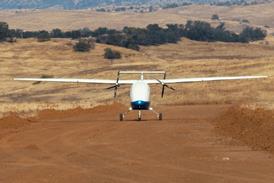Asian carrier profits reached another peak last year as rising fares and surcharges offset higher fuel prices. Analysts expect the profit streak to continue in 2008 but at a reduced level
Following record profits in 2007, Asian carriers are expected to see profits drop in 2008 to their lowest level since at least 2001 but they may avoid following North American and European carriers into the red.
Asian carriers in the Airline Business top 150 generated a $5.4 billion profit in 2007, an increase of 73% over 2006, as revenues grew 14% to $141.5 billion. This is the sixth consecutive year Asian carriers have been in the black and 2007 represents a new peak, surpassing the previous peak in 2004, when $4.5 billion in profits were generated.
"Right across the region it's hard to find an airline that didn't perform well last year," says Centre for Asia Pacific Aviation executive chairman Peter Harbison.
Perennially profitable Cathay Pacific, Singapore Airlines and Qantas again had great years, making it into the Airline Business 15 most profitable carriers list for the 10th consecutive year. Several Asian carriers also returned to profitability last year following restructuring including Japan Airlines, Malaysia Airlines, China Eastern and Garuda.
Association of Asia Pacific Airlines director general Andrew Herdman says profits increased last year because carriers were able to increase fares and surcharges to offset the rise in fuel costs. In 2005 and 2006 Asian profits fell from 2004 levels due to a squeeze in margins as airlines failed to pass on the increase in fuel costs. "[In 2007] margins tightened as they needed to," Herdman says. "In aggregate, Asian carriers had a good year."
 |
|---|
"In aggregate, Asian carriers had a good year"Andrew Herdman |
With oil prices doubling over the last few months, the picture has changed remarkably since the end of 2007. But demand in Asia so far has remained relatively strong and analysts say Asian carriers can more easily pass on higher fuel costs to customers than their counterparts in other regions. "For Asian carriers it is a cost problem, not a revenue problem," says Mark Webb, Hong Kong based analyst at HSBC. "That's the difference."
But Webb and Singapore-based Morgan Stanley analyst Chin Lim point out the price of oil has gone up too quickly to pass on all the additional costs. There is also a concern demand may start to fall later this year. "In Asia we haven't reached the point where people won't travel. We're not there yet but we are pretty close," Chin says.
Herdman says demand remains robust for now "but the economy is slowing and we are close to recession or are in recession in two markets", referring to Australia and New Zealand. "We're seeing oil prices we've never seen before and everyone is nervous if we can pass that on," he adds. "The question is: will demand hold up in the face of such huge increases of fares?"
Chin says "at best" Asian carriers overall will generate this year half the profits they did in 2007. More likely the sector will be break even or slightly above break even with Cathay, Qantas and SIA continuing to post healthy but reduced profits and most other carriers slipping into the red. "I think most of the airlines might not make a profit this year," Chin says.
Chinese and Indian carriers in particular are expected to be hit hard. China's three major carriers are already facing a downturn in demand and are expected to return to the red as they struggle to pass on higher fuel costs in an intensively competitive and highly elastic domestic market. Jet Airways chairman Naresh Goyal expects Indian carriers will lose $2 billion this year, blaming "irrational pricing".
Harbison says infrastructure constraints and overly rapid growth have caught up with Indian carriers: "India was starting to look at red ink in the second half of 2007. They ran into a brick wall in a lot of ways." Webb adds: "The irony is everyone was saying intra-Asia business travel would weaken and domestic China and India would be strong. What we've seen is the exact opposite."
Herdman says some carriers outside China and India may also be "pushed into the red". He adds "the key" is increasing fares, although he acknowledges this could result in reduced demand and capacity reductions. "We shouldn't be naïve on where it [the increase in fuel price] can go. It either comes from shareholders or customers."
MAS chief executive Idris Jala says fares need to increase by up to 50% and warns: "The general public everywhere must be prepared to face sharply higher prices for air travel now, or be prepared to stomach even higher prices later when the number of participants become fewer and competition fizzles out in favour of consolidation."
So far MAS is one of only a few Asian carriers which have reduced capacity but Chin foresees "most of the Asian carriers cutting capacity pretty soon". Herdman also expects capacity and fleet cuts but adds: "We're talking about a slowdown in growth, not a shrinking of the market."
Source: Airline Business
















